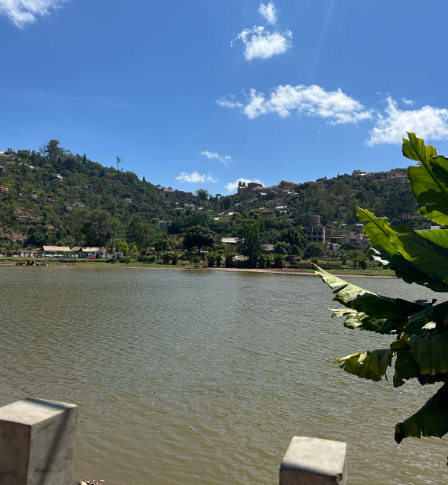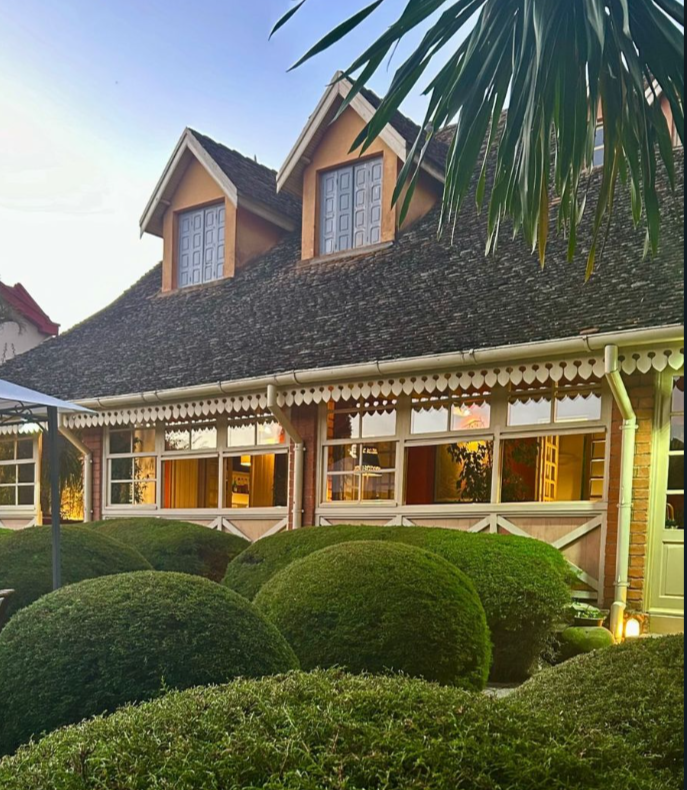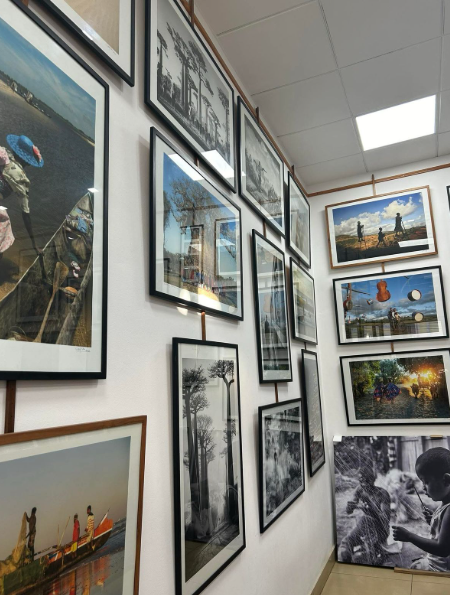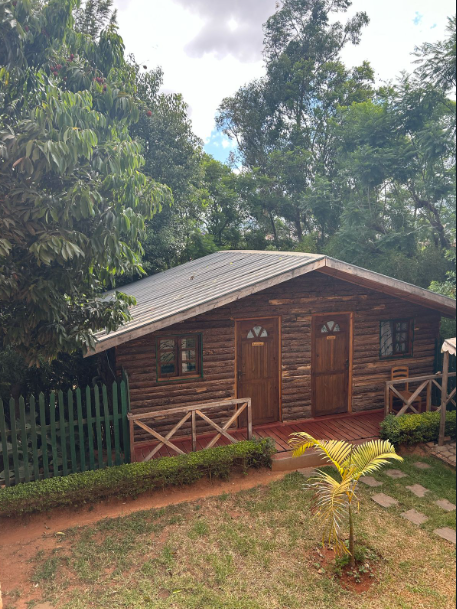Fianarantsoa is often perceived as an old and quiet town, mainly a stopover on the famous RN7 route. However, a closer look at Fianarantsoa will reveal that it is much more than just a transit point to the south of Madagascar.
This historical city, known for its relaxed atmosphere, is also famous for its wine, tea, and rich cultural heritage.
While it doesn’t have a thriving festival scene, and its nightlife isn’t as vibrant as in larger cities, Fianarantsoa is perfect for those who enjoy the outdoors, historical explorations, or simply appreciate a peaceful and authentic Malagasy lifestyle.
If you’re looking for a peaceful yet dynamic environment to build your business while enjoying weekends of hiking and cultural immersion, Fianarantsoa offers the perfect setting
Historical and Geographical Overview
Fianarantsoa serves as the capital of the Haute Matsiatra region.
The city is divided into Ville Haute (Upper Town) and Ville Basse (Lower Town), each with its own charm and distinct character.
Ville Haute, the historical heart, offers a glimpse into the city’s colonial past with its well-preserved old houses and religious institutions, while Ville Basse is more commercial and bustling, hosting markets, businesses, and modern amenities.
Fianarantsoa was built in the 19th century by Queen Ranavalona I, at more than one thousand meters high, in an ancient village called Ivoenava. The Queen intended to make it the capital of the southern part of the Big Island.
The city’s architecture is similar to that of Antananarivo, with its alleys, stone stairs, and marketplace. Ranavalona I also had an artificial lake built there, just like Lake Anosy in Antananarivo.

Her husband, Radama I, used the city as a base camp during his military campaigns.
During the colonial period, the Fianarantsoa-Manakara railway line was constructed to stimulate the region’s economic development which remains operational today, offering one of the most scenic train journeys in the country.
Activities
Dining and Socializing
Whether you enjoy a relaxing meal or an evening of singing and playing games with friends, there are several great spots to visit:
– Lac Hôtel Sahambavy: A scenic escape accessible by a train called “the Micheline”, offering stunning views and a tranquil atmosphere.
– La Table du Rova: Located in the old town, this restaurant serves exquisite Malagasy dishes, including local specialties such as ravitoto and romazava royal.
– La Résidence Matsiatra: A cozy setting located in the heart of the city, the place offers good food, warm hospitality, and a mix of local and international cuisine.
– Tsara Guest House: Perfect for a peaceful meal with an intimate ambiance.

Tourism and Cultural Exploration
Fianarantsoa offers rich cultural and outdoor experiences. Some must-visit sites include:
– Crafts workshops: Explore the outskirts of the city to witness the craftsmanship of vegetable fibers, bamboo, silk weaving, and Antemoro paper production.
Just a few miles from Fianarantsoa, Ambatomainty is renowned for its magnificent pottery.
The locally made ceramics are cooked in large open fires, showcasing traditional Malagasy craftsmanship.
It’s a great place to purchase authentic handmade pottery directly from artisans.
These traditions have been passed down through generations and are an integral part of Malagasy culture.
– Pierrot Men’s Photography Studio: A visit to this renowned photographer’s workshop is a treat for art lovers. Pierrot Men is known for capturing the essence of Madagascar through his powerful images.

– Old Town (Ville Haute) – A charming walk through history with its preserved colonial architecture, cobbled streets, and stunning hilltop views.
– Sahambavy, known for its tea plantations, offers an opportunity to immerse in the region’s agricultural life.
You can explore the scenic hills, take guided walks through the plantations, and sample locally produced tea while learning about the traditional farming methods used here.
-Ranomafana, located nearby, is a must-visit destination for nature lovers and wildlife enthusiasts.
The Ranomafana National Park is home to diverse flora and fauna, including several species of lemurs, birds, and reptiles.
Hiking through the park’s rainforest trails allows visitors to encounter these species in their natural habitat while enjoying breathtaking waterfalls and hot springs.
-Maromby Monastery: A serene spiritual site perched on a hilltop.
This monastery, surrounded by tranquil landscapes, provides visitors with a glimpse into the religious practices of the local community.
Exploring the monastery grounds (and the wine), visitors can participate in peaceful meditation sessions or enjoy the simplicity of monastic life.
-Ambalavao: Located south of Fianarantsoa, it is known for its lively zebu market and the production of Antemoro paper.
The zebu market, held on Wednesdays and Saturdays, is one of the largest in Madagascar, where locals trade cattle in a vibrant atmosphere.
Furthermore, visitors can explore workshops to see the paper-making process of Antemoro papers and appreciate this unique Malagasy art form.
– Clos Malaza Wine Estate: Located 30 km from the city, this vineyard is accessible via a scenic hiking trail that passes through Betsileo villages.
Visitors can learn about Malagasy wine production, enjoy a tasting session, and even purchase locally made wines.
Education
Education in Fianarantsoa has some limitations, particularly in terms of English and French-language schools.
For French education, René Cassin Secondary School offers excellent quality, but students must travel to the French high school in Tana to continue their studies.
There are no recognized English schools offering British or American curricula, so many parents choose to homeschool their children.
For locals, however, there are plenty of educational options available, including up to university level.
The National IT University (ENI) is a leading institution for computer science and technology in Madagascar.
Accommodation
Due to limited access to education, the city tends to attract more couples than families.
If you’re a couple, renting a house in Fianarantsoa is quite affordable (around 400 000 to 600 000 Ar).
If you’re looking for a peaceful yet convenient spot to stay in Fianarantsoa, the Three Palms Guest House is a top choice for a long-term stay.
Ideally located, it’s close enough to the town center and the old town, while being surrounded by greenery, offering a quiet retreat with easy access to all the city has to offer.

Business and Social Impact
Tourism
Fianarantsoa’s strategic location along the RN7 makes it a main stop for travelers heading south, and its potential for tourism-related businesses is significant.
Developing eco-tourism lodges that blend with the natural environment could attract eco-conscious travelers seeking a tranquil retreat in the region’s beautiful highlands.
Guided tours showcasing the nearby natural wonders like Ranomafana National Park and the tea plantations of Sahambavy offer opportunities to explore the area’s biodiversity and local culture.
Additionally, cultural experience programs, such as traditional Malagasy cooking classes, art workshops, or village tours, could provide unique, immersive experiences for tourists, creating a profitable niche in the growing tourism market.
Agriculture
The fertile land around Fianarantsoa is ideal for a variety of agricultural activities and agri-business opportunities.
Expanding into the production of tea, rice, and even wine could appeal to both local and international markets.
Wine production, in particular, has gained attention due to the growing demand for quality, locally sourced products.
Investment in sustainable farming practices and value-added products, such as specialty teas or organic rice, could attract niche markets and contribute to the region’s economic growth.
Information Technology
Fianarantsoa presents great opportunities for IT businesses, thanks to the skilled workforce from ENI, the National IT University.
Entrepreneurs can access a pool of talented graduates for tech projects in sectors like education, e-commerce, and agritech, making it an ideal location to start a business with quality local labor and a supportive environment for innovation.
If you’re ready to move forward and start a business in Fianarantsoa, Madagascar Invest can guide you through the process of setting up and registering your company.
Supporting Local Communities
Spending time with a social organization is one of the best ways to connect with locals.
You can volunteer and support local NGOs like Friends of Madagascar in Kelilalina, just 85km from Fianarantsoa.
This organization is dedicated to finding innovative ways to educate children in the surrounding areas, making a real difference in the community.
Conclusion
Fianarantsoa may not be a party hotspot, but it offers a unique blend of history, culture, nature, and community engagement.
Whether you’re an outdoor enthusiast, an entrepreneur, a history lover, or someone looking for a quiet retreat, this city has something special to offer.
Expats who take the time to immerse themselves in the local culture and lifestyle will find Fianarantsoa to be a deeply rewarding place to live.





